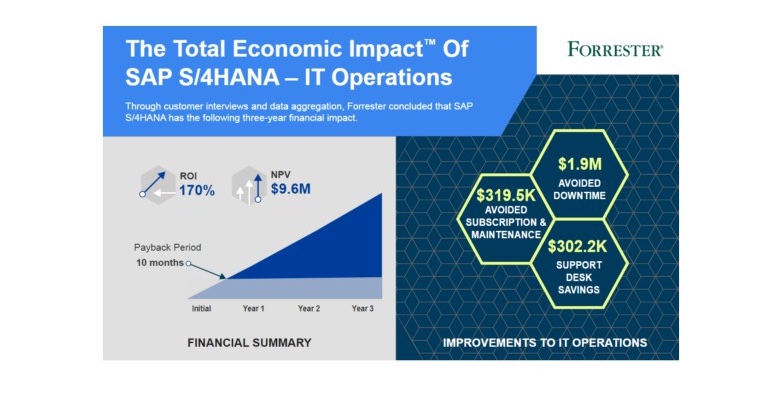
The acceleration of digital transformation is driving companies to speed up the integration of new technologies and improve their business processes. SAP S/4HANA helps companies achieve these objectives and move forward with digital transformation by providing intelligent Enterprise Asset Management.
Many SAP customers are migrating to SAP S/4HANA since SAP’s announcement that they will stop providing maintenance to SAP ECC systems. Automation is, therefore, becoming essential to achieving faster and safer migrations while reducing human error.
SAP and S/4HANA are a family of software solutions that are revolutionizing the world of Enterprise Asset Management. Features like real-time insights, machine learning, and predictive analytics contribute to its growing popularity. Manufacturers and companies of all sizes use S/4HANA to track assets, manage performance, and assess risks.
The current implementation of SAP ERP, SAP ECC 6.0 will continue to be supported until 2027. As more companies are leveraging intelligent ERP systems, however, companies can consider their legacy ERP system outdated already.

According to SAP, the main technical benefit of S/4HANA resides in the intelligent ERP system that runs in the SAP HANA in-memory database. This technology can transform business processes through a simplified data model and automation. Here are some major benefits of migrating to S4/HANA:
So, you have decided to make the transition and take advantage of the opportunities S/4HANA provides for your business. However, operations must continue while migrating systems. The SAP Insider Benchmark survey reports that a majority of companies are planning to move to S/4HANA with a remote workforce and are deploying it in the cloud.
Automating the migration enables companies to keep their systems in sync while migrating to a S/4HANA environment. Additionally, automation eliminates manual effort, reducing the possibility of human errors caused by migrating remotely. It saves time and costs by automatically synchronizing and migrating changes. Now that we’ve looked at the benefits of migrating to S/4HANA, let’s look at some tips to make the process as smooth as possible.
Large migration projects can be costly. Automating steps in the migration (e.g., the testing process) can make the migration faster and more reliable. Despite the obvious benefits of automation, many companies hesitate to implement automation for fear of disrupting existing processes. Here are some tips to ensure a successful migration:
Organizations don’t have to carry so much uncertainty on their journeys. By following our recommendations, you can accelerate your SAP migrations with greater confidence. Because you can apply these recommendations to any SAP change, you can get started with them now while you are still on SAP ECC and continue benefitting from them as you move to SAP S/4HANA and beyond.
Incorporate change-impact assessments into your current update process. We provide automated solutions that reveal the risks in any custom or SAP-issued update, not just SAP S/4HANA migrations. When integrated with an automated testing platform, our solution can automatically create test plans for an upgrade based on the identified risks. This can amplify your savings of time and resources, compared with manual efforts, while delivering better quality, coverage, and analytics.
The benefit of early change-impact analysis is that it provides a focused list of risks that organizations can then test. Lack of automated testing is a concern. This could be because half of all respondents still plan on using manual testing when they upgrade to SAP S/4HANA. While there always will be a place for manual testing, it is time-consuming, tedious, and expensive. It can cause bottlenecks and isn’t guaranteed to find the defects you’re looking to fix.
SAP customers intend to use test results from their existing SAP system as their baseline for acceptance criteria for migration to minimize time and cost. Considering how different SAP S/4HANA is from SAP ECC, looking backward into your old system is not an accurate or effective way to prepare for the significant changes that can happen to your system after a migration.
Adapting to digital transformation involves more than acquiring and implementing new technologies. Companies seeking to improve their organizational performance may benefit from intelligent ERP systems, such as S/4HANA.
As experts in SAP Services, Accrete provides process and systems integrations advisory for companies looking to enhance their business processes through design and deployment of SAP, S/4HANA, CRM, C/4HANA, Salesforce, and Mobility solutions. In short, we provide industry-specific disruptive and innovative solutions that will help your company jump ahead of the competition.
If you want to know more about our approach, request a consultation. For questions about how Accrete can help with your particular industry needs, contact us to learn more.